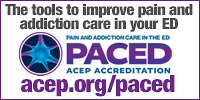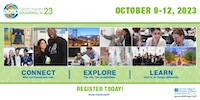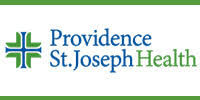- July 1,2017 | ISSN 1940-6967
- The National Association Of Medical Doctors
Featured Sponsors
Phage Therapy Saved This Man
By Marlene Cimons
Tom Patterson should have died during those weeks in March 2016 when he lay comatose, a lethal strain of multi-drug-resistant bacteria raging through his body. Antibiotics proved useless, and his doctors were grim. They were losing him.
He should have died, but he didn’t. Instead, in desperation, a novel approach — giving him infusions of bacteria-killing viruses known as bacteriophages — saved his life.
“There is no question that without these phages, I wouldn’t be alive today,” he says.
Patterson, now 70, is an AIDS researcher and psychiatry professor at the University of California at San Diego School of Medicine. He first became ill in November 2015 while vacationing in Egypt with his wife, Steffanie Strathdee, now 50. He began suffering abdominal pain, fever, nausea, vomiting and a racing heartbeat. The local doctors thought it was pancreatitis — an inflammation of the pancreas — but he grew sicker, even with treatment.
After a few days, he was evacuated to Frankfurt, where physicians found a pancreatic pseudocyst — a collection of fluid around the pancreas — half the size of a football. After the fluid was drained and cultured, Patterson’s doctors discovered he was infected with a multi-drug-resistant strain of Acinetobacter baumannii , an often deadly bacterium.
On Dec. 12, 2015, he was airlifted to the intensive care unit at UC San Diego’s hospital. While there, a drain designed to localize his infection slipped, causing bacteria to flood into his abdomen and bloodstream. He experienced the first of several episodes of septic shock, a condition where blood pressure drops and prevents blood delivery to the organs. He fell into a coma that lasted almost four months.
He remembers little during that period, except having persistent hallucinations. “I thought I was on a spit, turning over and over, or in the desert drinking sand,” he recalls. “I felt consumed with pain.”
He says he also could hear his wife talking to him through the fog. Physicians told her to prepare for his death, but she wasn’t ready to give up. “I knew he was really tired, and I told him I would understand if he wanted to slip away, but I asked him to squeeze my hand if he wanted to fight,” she says. He squeezed her hand.
Strathdee, who is chief of the Global Health Institute at UC San Diego, decided to explore alternatives. She had studied bacteriophages in college, and she learned that a friend of a friend had been treated successfully with phage therapy in the former Soviet Union. She raised the possibility with Patterson’s physician, Robert T. Schooley, UC San Diego’s head of infectious diseases. He said he was willing to give it a try.
They contacted the Center for Phage Technology at Texas A&M University and the U.S. Navy Medical Research Center; both had been studying phages and had phage “libraries.” Schooley sent isolates of Patterson’s bacterium to each, hoping they would be able to match it to specific phages.
Because phage therapy is not approved for general use in this country, Schooley also contacted the Food and Drug Administration, which can authorize experimental treatment in cases where there are no viable alternatives.
FDA officials were “very supportive of the approach, given where Tom was with his illness,” Schooley says.
Patterson’s physicians used combinations of nine different phages to treat him, all targeted to his specific bacterium; they were provided by Texas A&M, the Navy and AmpliPhi Biosciences, a San Diego biotech company.
The first phages arrived from Texas about 48 hours ahead of the Navy samples. On March 15, 2016, doctors administered the first strains directly to the original infection site through drains already in Patterson’s abdomen. When the Navy phages came, physicians decided to deliver them intravenously so that they could circulate through his bloodstream, reaching other areas in his body.
Two days later, Patterson woke up. He couldn’t yet talk, but he clearly recognized Carly, his adult daughter, who was at his bedside.
“It was extremely gratifying,” Schooley says. “Having known Tom for a decade, he was both my patient and my friend. As his doctor, it was intellectually extremely exciting to see that this approach had worked. As his friend, it was exhilarating to have him back among the living again.”
He’s had a long, arduous recovery. He had spent nine months in the hospital, which took a terrible toll. A strapping though overweight man of 6-foot-5 before his illness, he lost 100 pounds and all of his muscle mass during his hospitalization.
“I looked at my arm, and it was literally bone,” he recalls. “I was shocked at what I’d become. I lifted up my gown, and I had shrunk. They had to teach me how to swallow, how to talk. They had to hoist me out of bed. It took a month before I could sit, and another three months before I could walk 100 yards on a level surface with a walker.”
He was discharged to go home on Aug. 12. After months of physical therapy, he is now back at work. He can walk up to two miles at a time. “Everyone’s amazed at my recovery, although I’m not yet 100 percent,” he says.
But he’s alive.
“I wouldn’t have lasted another two weeks,” he says. “To get this treatment, I had to be almost dead. Phage therapy has really been a miracle for me. We are running out of tools to fight these superbug infections, and I hope my experience helps move the field forward. What I went through was not enviable. But it’s really a privilege if it means that millions of people may be cured using this in the future.”
Articles in this issue:
Top Physician Opportunities
Journal of Medicine Sign Up
Get the Journal of Medicine delivered to your inbox.
In This Issue
Archives
Masthead
-
- Editor-in Chief:
- Theodore Massey
- Editor:
- Robert Sokonow
- Editorial Staff:
- Musaba Dekau
Lin Takahashi
Thomas Levine
Cynthia Casteneda Avina
Ronald Harvinger
Lisa Andonis
Leave a Comment
Please keep in mind that all comments are moderated. Please do not use a spam keyword or a domain as your name, or else it will be deleted. Let's have a personal and meaningful conversation instead. Thanks for your comments!















*This site is protected by reCAPTCHA and the Google Privacy Policy and Terms of Service apply.